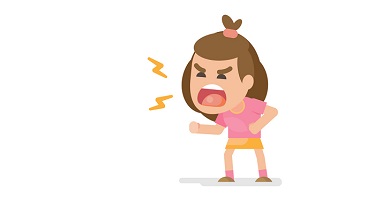May 31, 2018
By Luna Greenstein

As a parent, you know your child—their behavior, their character, their attitude—better than anyone. You’ve watched them grow, taken care of them and gotten to know who they are. But what do you do if you notice that they start to change in unexpected ways and begin behaving in ways that concern you?
It’s easy to label troublesome behavior as “growing pains,” but we can’t brush off changes in behavior if they seem abnormal or excessive, especially if they happen frequently or interfere with our child’s daily routine. When this occurs, it’s possible your child may be experiencing a mental health condition.
One diagnosis that presents only in children aged 7-18 is called Disruptive Mood Dysregulation Disorder (DMDD). DMDD is a condition in which a child experiences chronic, severe irritability and anger. Primary symptoms include an irritable mood and temper outbursts. Tantrums can occur typically around three to four times a week and will usually be out-of-proportion to the situation.
A child experiencing DMDD may express their aggression through verbal rages, damaging property or hurting themselves or others. It’s also common that they’ll have difficulty getting along with others (adults and other children). Due to a low frustration tolerance, they may also have difficulty taking part in activities at school and at home, such as sitting through a family dinner.
The diagnosis of DMDD is considered when symptoms occur before age 10 and have been present for at least 12 months in more than one environment (at home, at school, with peers). A diagnosis of DMDD is more common in boys than girls.
This diagnosis is relatively new to the field of mental health. It was added to the Diagnostic Statistic Manual V (DSM-5) because kids were frequently being misdiagnosed with bipolar disorder. Unlike the episodic nature of bipolar disorder, DMDD symptoms are consistent day-to-day. Most kids with DMDD won’t go on to develop bipolar disorder; however, having a DMDD diagnosis increases the risk of anxiety and depression later in life.
Additionally, rates of comorbid diagnoses are extremely high. It’s rare for a child or adolescent to have only a diagnosis of DMDD. Conditions that most commonly occur along with DMDD include anxiety, depression and autism spectrum disorder.
Most children have occasional outbursts, however, if your child is often intensely angry and aggressive, they may be experiencing symptoms of DMDD. If you’re not sure what to do, you can start by:
If your child is acting out in a way that seems excessive, don’t assume it’s the nature of childhood. Mental health conditions can begin at an early age, and as the field of psychiatry progresses, we are learning more about conditions like DMDD that specifically impact kids. Help your child by being aware of their behavior and getting them help if they appear to be struggling with powerful emotions.
After all, no one knows them better then you.
Laura Greenstein is manager of communications at NAMI.
We’re always accepting submissions to the NAMI Blog! We feature the latest research, stories of recovery, ways to end stigma and strategies for living well with mental illness. Most importantly: We feature your voices.
LEARN MORENAMI HelpLine is available M-F, 10 a.m. – 10 p.m. ET. Call 800-950-6264,
text “NAMI” to 62640, or email. In a crisis, call or text 988 (24/7).